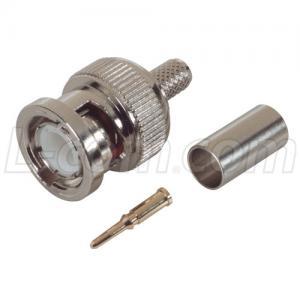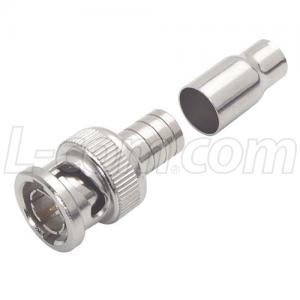-
Posts
8,554 -
Joined
-
Last visited
-
Days Won
7
Content Type
Profiles
Forums
Events
Everything posted by Pars
-
Ouch! Was getting christmas decorations ready and found half the lights in our lighted garland were working. Went thru all the bulbs and still not working. Went out with the wife last night and didn't find anything else we liked, so spent about an hour this morning with the DMM and fixed it. Now my thumb and forefinger are sore from pulling #&@%! bulbs.
-
What C0G SMT caps do you (or anyone) use? At 0.1uf, the ones I have seen mostly run $5-$7 each, other than the Murata 81-GRM31C5C1E104JA01 at Mouser, which are reasonable. I had been restricting my searches to 1210 package; these are 1206 package which is why I had missed them before. These are 25V which should be sufficient. I pulled and socketed the PCM63s yesterday and also pulled the sockets for the AD8599s and will put these right in the board instead. I think I may have a way of doing the SMT caps right on the pins, so will probably try this. I do have some 0.1uf X7R 1210 package caps, so I may use these. For PSU bypass use, is the C0G versus X7R that big of deal?
-
Doesn't appear he lasted too long unbanned. Too bad
-
Happy Birthday Bryan! Is this 21? Have a great one.
-
Got both channels stable using the THS4031s on adapters directly into the PCB. I wound up putting the AD8599s for the buffer/SE->bal conversion on a pair of BrownDog adapters I had, and I used sockets for these. 100uf on each V pin to ground, 2.2nf MKP right under the socket between V+/V-. I did some listening and liked what I heard so far. CD player is still torn apart for some additional stuff I am going to do. The AD8599s seem to be running rather warm, verging on hot; I can put my finger on them but it gets uncomfortable. I didn't notice any oscillation, but I will look again. I may need to pull the sockets and put these right on the PCB as well. I don't think I can fit any COG ceramics bypassing the 100uf Pana FMs.
-
THat would be great naaman. Would love to meet you.
-
I didn't have time to get back to this until tonight. I put the Aries adapter right in the PCB with the Pana FMs right on the adapter pins on the board topside and soldered to the ground plane instead of pin 3. Still had the MKP 2.2nf right on the top of the chip from rail to rail. Seems to work fine. No sign of oscillation on the output, sine and square waves looked good and matched the stock chip that I put in the socket on the other channel. There was some noise (<50mV) that I could see on the PSU pins, so I removed the adapter and rechecked with nothing in. Noise was the same, so it must be the PSU. I guess I am spoiled by sigma22/Gilmore supplies, but I think the noise is inconsequential. I'll do the other channel tomorrow night. Can I get away with putting the AD8599 buffers on sockets (and adapters)? I haven't really looked at these or the datasheet for them. Thanks for the suggestions, but I'm not really a believer in bypassing caps. The Pana FMs have good HF characteristics, and bypass caps can lead to other resonances. Plus the way this is implemented, I don't think there is any way I could fit them.
-
I moved this from the build gallery thread cuz it was getting too far off topic. I am playing around with a Rotel 991 CD player and was going to replace the exisiting I/V stage with THS4031 and AD8599 buffers. My plan was to use Aries adapters and socket the opamps, with Pana FM 100uf caps as close to the V+/V- pins, and somewhere in the area of 1-3.3nf across V+/V-. I had removed the stock opamps, so I put a std. Mill Max socket in one of the I/V spots, and put the Pana FMs on the bottom, going from pins 7-3 (V+) and pins 4-3 (V-). The board has a top ground plane which would be a better spot to run these too than pin 3, but I felt I could get the caps closer to the V pins this way. I fired it up, and looking on my scope (Tek 465b), I don't see any signs of oscillation. Opamp does not get hot at all. It also doesn't work (most of the time). When I measured it, the -in was ~0.8V and the +in was 0.85V. The plus input is pin 3, which is grounded. Odd. I have a test CD with sine waves, etc. on it, so I put that in and put one of the stock opamps in. Nice sine on output. I put the THS4031 back in and it does work briefly, but the output then collapses and does not work after that. Next plan is to remove the socket and solder the Aries adapter directly into the PCB. Probably put the Pana FMs on the top and use the ground plane. Any further thoughts/ideas appreciated.
-
Some new info from John W.: Da-capo issue (John W?) - Page 52 - diyAudio Interesting discourse on I-out vs. V-out, at least with whatever DAC chip(s) he is using in a previous post: Da-capo issue (John W?) - Page 51 - diyAudio
-
WTF? Nice 3rd post... And I see a new high low... listing fuses in your fucking sig
-
Yes, but they are big...
-
Those would fit right in with the 6x18ga Jena strand per channel LOD Double-secret braided, of course
-
Oh yeah, FETs... guess I missed that. No you can't do those with an hfe tester. That will teach me to respond to stuff while I am working (work work).
-
Happy Birthday!
-
It depends. It is best to match at the Ic that the devices will be running at. Obviously a handheld DMM matches at a fixed (very low) current... you aren't going to match Dynahi output devices at 85mA on it for example. The manual may state the parameters for the hfe test. I trust them and they seem to correlate pretty well with stuff I have matched using two meters and a bench supply for small signal transistors.
-
Matching. hfe is the DC current gain (ratio of Ic and Ib). Matching for hfe and vbe (which is usually the same on linear transistors) gives a pretty good match. Temps of the devices need to be the same, etc. while doing this, but a meter that does hfe will get you much of the way there.
-
I thought I'd see this post the day after ChiUnifi. Congrats, hope you enjoy them as much as you were then!
-
I don't know that you could come up with a characteristic impedance that would cover all RCAs. The spdif standard is 75 ohms, but if you changed the transmitter and receiver matching as well as the cable/connectors then sure, you could use anything you wanted.
-
I would agree. It wouldn't surprise me if they are also quieter (electrically) than a battery supply, assuming good implementation.
-
Just make sure you get 75 ohm BNCs as opposed to 50 ohm, which seem to be more common (used for oscilloscope leads, etc.). When looking at connectors over time, I have noticed that many of the boutique BNCs are actually 50 ohm, but moar gold plated. Furutech--probably 50 ohm Vampire--also appears to be 50 ohm Cardas--appears to be 75 ohm, though can't tell for sure Trompeter 50 and 75 ohm shown in thumbnails: 50 ohm on left, 75 ohm on right.
-
Happy Birthday Billy!




